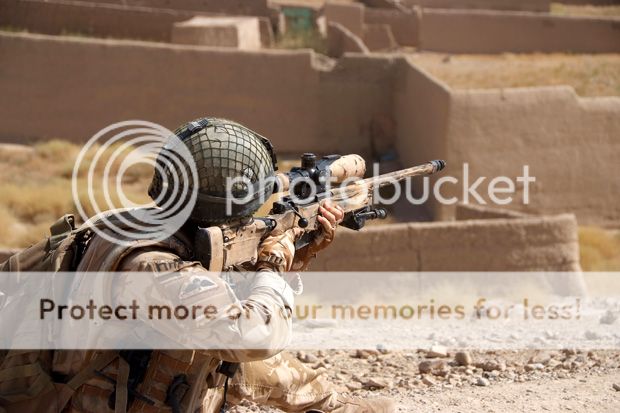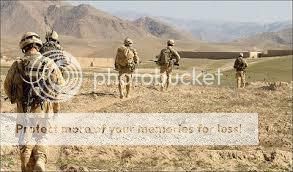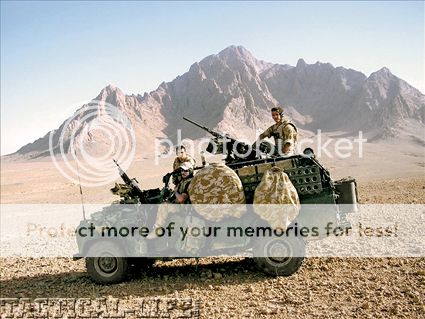[
b]The Tactical Building Blocks
by
Major Russel Lewis
[/b]
Your skill set evolves with experience and feedback. As with so much in life there are often "fundamentals"- inalienable truths that no matter how hard you scrub, they won’t go away. Combat is no different. Modern operations-be they military or law enforcement-are extremely complex and often very difficult to prosecute. Training regimens, facilities and instruction have developed significantly- dynamic moving target ranges, force on force equipment and realistic simulation- but, there remains key skills that every individual requires. Good team tactics are based on good individual skills therefore the basics must be mastered first.
As I prepared my Company and myself for a tour in Afghanistan I realised that there were core skills that we would all require to go in to harms way. Looking at them now I realise they are more universal that I realised at the time. For a soldier, law enforcement officer or security minded individual the fundamental skills- the building blocks- I would argue, are: marksmanship, first aid, tactics, communications and fitness. Each one crucial in its own right but they also interlock and interrelate to each other. Does your training programme incorporate all of these? Or does it focus on one single aspect? Its human nature I am afraid- we all like the comfort zone. How many times have you gone to the gym and done your ‘favourite’ session rather than a gut buster? Your need to train all of the building blocks as these will create a firm foundation for your subsequent training and execution to sit on.

Marksmanship can imply "rangemanship" but the operator needs to focus on combat marksmanship. Combat marksmanship is a fusion of: situational awareness, slick skills and drills, rapid target prioritisation and accuracy. Ultimately if firearms are to be used to solve the problem you need to do it as quickly and as accurately as possible, with the minimum amount of rounds expended. The ‘surgical application of violence’. With the danger of fratricide and collateral damage always present accuracy is paramount. It harks back to the quality versus quantity debate. Quantity may work in some situations but quality will work all of the time. You need balance suppressive fire, with fire and manoeuvre.

˜Train as you will fight because you will fight as you train. A fantastic quote and often ignored. How often do you practise properly? Will you be wearing helmet and body armour on the day? If the answer is yes then you need to train in it. It's hot and it's heavy but that’s life- deal with it. When was the last time you practised in a low/no light environment? Have you practised with white light or IR illumination on NVGs? For your training to be effective it needs to be relevant and demanding. Shoot/no shoot scenarios are a good way of testing situational awareness and target prioritisation. You need to develop the ability to react instinctively and with precision. Ultimately you need to hit what you are aiming at. Make sure your opponent can no longer take part in hostilities as quickly and as efficiently as possible.
I attended a fantastic presentation by the USMC on their experiences in Fallujah. A discussion began on the effectiveness of the 5.56mm round and its lethality. The USMC Lt Col fielding the question said that the USMC had done a significant amount of research on this subject and came to the conclusion that the 5.56mm was fit for purpose as long as 3 crucial factors were incorporated. The 3 factors? Shot placement, shot placement, shot placement! Your training needs to factor in the variables. Have you drilled for an opponent wearing body armour? Do you want to immobilise (pelvis region) or kill (heart, throat, head). Is your eye relief correct for your body armour? What ranges are a realistic shot? In the current environment you need to be training for a target that is not seen, partially seen or fleeting.
If you are going to train to take a life then you need to train to save a life. If violence is to be used to resolve a situation then your first aid skills are probably going to be tested. You may be faced with the situation of treating yourself, your partner, a bystander and your opponent. At this level the priority is to stabilise until professional assistance arrives. This is always a dangerous subject in today's litigious society so use these skills wisely and seek professional training. We need to be able to rapidly prioritise casualties and deal with the most important first. A critical bleed will always take priority, then airway, breathing, circulation (heart) and disabilities (other injuries). Most importantly this all needs to be done while maintaining your situational awareness. Do not become a casualty yourself in your exuberance to treat others. Security first, then casualties.
If you are going to carry a weapon then you need to carry a good, simple first aid kit. For those in uniform the contents and carriage are probably going to be SOPs. For everyone else you will need to develop your own. For my unit, it is a clearly marked pouch attached to your body armour. Within the pouch is a C.A.T (combat tourniquet), hemcon, 2 field dressings and morphine. That’s it. Remember it is stabilisation of a casualty, not field surgery. If you are going to go beyond this you will need professional training. Airways, sutures and chest ventilation kits are excellent life saving tools as long as they are used correctly. If in doubt don’t make the situation worse. Security, stabilise, seek assistance and reassure. All the while checking your 360!
Tactics are the ˜nuts and bolts", the ˜what to do". Efficient battle drills and slick SOPs are vital to both the individual and the team and need to be repeated and rehearsed until they become unconscious. Tactics are how we are going to fight the battle. You need to rehearse multiple scenarios and then apply this template to the tactical situation. Do you always practice break contact drills? Maybe the situation merits forward movement as opposed to backwards. Have you rehearsed this? Do you practice multi-directional contact or is it always contact front? I know that range limitations can often hamper this kind of training but there are other ways around this.
Work through tactical scenarios on a white board. Talk through exactly how you will conduct each drill and then walk through them slow time. Build up the speed and have someone initiate the scenario for you. Run through the drill full speed and run through it a number of times. Then work up to other training aids. Airsoft and simmunition are a good interim if you have range limitations. The next level is blank but this may only be open to the military. I am not suggesting these as a substitute for live fire but they are the logical progression to improving your skill set and I would follow this route whether I had access to a range or not.
The next area that definitely needs practise and is easy to overlook is communications. I am not just talking about the ability to use a radio, although this is a key part. The ability to craft an accurate, concise message that conveys all of the relevant points is a crucial skill. What is often underestimated is that communication will have to be done in a high pressure environment with a lot of external distractions. It is easy to give an accurate location and a brief description of a situation, pointing out safe routes and RVs while you are relaxed and composed. This is not so easy when you are struggling to breath through exertion, confused, disoriented and fighting through the adrenaline dump. A
prompt card is a useful addition to your ˜armoury". A small, laminated card with prompts that you use as a check sheet to work through, in an emergency.
If you work as a pair, or a team you need to establish and practice your SOPs. Make sure that you understand all of the commands that may be used. You don’t want to be changing mags at the same time as your buddy! So know how to use your radio and have emergency numbers programmed in to your cell but realise that you will be attempting to communicate crucial information while fighting through the physiological reaction to combat. Make your comms simple, robust and concise. Use check sheets and prompt cards. You will be amazed at how confused you will be ˜on the day".

The building block that underpins all of the above is fitness. You might be the best shot, a paramedic, a tactical Rommel and a gifted communicator but if you can't move yourself and your battle load around the arena of combat your not that much use. The ability to get in to and importantly out of trouble, at speed, should not be overlooked! Combat is hard graft. It is anaerobic, lung splittingly hard work and you need to have a good level of core fitness to take part. A fit individual is more alert and has better endurance, both physically and mentally. Are you confident that you could drag a wounded colleague out of danger while wearing your full load? If not it is time to hit the gym.
I have a rolling physical training programme that runs all of the time and I try to vary the different activities to incorporate as much ˜warrior fitnes"s as possible. Physical fitness can be very activity focused (e.g. squash v running) so I work on a generalist fitness rather than anything too specific. I run for cardio fitness and endurance. I circuit train for strength and anaerobic fitness. I use weights (particularly kettlebells- they are awesome!) for strength and I use specific exercises to target areas I have identified and want to develop (e.g. grip). If in doubt seek professional coaching but you don't need much money and equipment to create a really useful and creative training programme. I would strongly recommend Kelly McCanns Combative Conditioning DVD for some really good ideas on training and equipment improvisation. Don't forget the good old fashioned ‘gut check’. A session designed to take you out of zone and in to a whole new place. The best ones are when you give yourself and often the contents of your stomach over to a sadistic minded individual who can beast you, old school. It’s going to be hard on the day, so relish these opportunities!
As an operator you have a responsibility to yourself and to your colleagues to develop your individual skill set. A warrior trains every day; in some way, be it physical or mental. The tactical building blocks are your core fundamentals- the must haves. They are logical and generic- as applicable to the SF operator as much as they are to the security minded civilian. Like a lot of things they aren’t exclusive. You might think that there are more. If so- great! I would argue that there can’t be less though. Train hard.
